Who was Beethoven waiting for in the fifth symphony?
mainWelcome to the 36th work in the Slipped Disc/Idagio Beethoven Edition
Beethoven 5th symphony (continued from yesterday)
Those four opening notes are the most peremptory introduction to any work of music. No composer grabs an audience so rudely by the ears until Gustav Mahler in his fifth and sixth symphonies a century later. Beethoven is announcing that he is done with good manners. The fifth is the demarcation line between a conventional composer and a dangerous one. From now on, it’s all or nothing. Hector Berlioz wrote that the fifth symphony is ‘the first in which Beethoven gave wings to his vast imagination without being guided by or relying on any external source of inspiration.’
What message Beethoven meant to convey has been subject to much speculation; whatever it was, it was big. Eighteen months after its first performance, the author E. T. Hoffmann wrote a long review in the Allgemeine musikalische Zeitung, arguing that the symphony captures our greatest joys and fears. Hoffmann established Beethoven as the cornerstone of romanticism: ‘Beethoven’s music wields the lever of fear, awe, horror, and pain and it awakens that eternal longing that is the essence of the romantic… What instrumental work by Beethoven confirms this to a higher degree than the profound Symphony [No. 5] in C Minor, a work that is splendid beyond measure. How irresistibly does this wonderful composition transport the listener through ever growing climaxes into the spiritual realm of the infinite.’
Hoffmann, in this 1813 essay, fixes and distorts Beethoven’s image for all time to come without taking us any closer to any inner truth. The work was titled Fate Symphony by the publisher, because Beethoven had muttered something about fate knocking at the door, but we have no idea who Beethoven was expecting and why he makes us so alarmed.
All we can rely upon is a tradition of posthumous performance that begins with Felix Mendelssohn’s influential leadership in Leipzig, followed by Richard Wagner’s powerful advocacy in mid-century. Two Hungarians who played under Wagner’s baton at Bayreuth, Arthur Nikisch and Hans Richter, embedded Beethoven style at the heart of the repertoire – Nikisch in Leipzig, Boston, London and Berlin, and Richter in Vienna, London and Manchester. No record survives of Richter. Nikisch, in November 1913, chose Beethoven’s fifth as the symphony loudest enough to overcome the ambient noise of primitive recording. Forty members of the Berlin Philharmonic strings and brass were clustered aound a big horn and someone threw a switch.
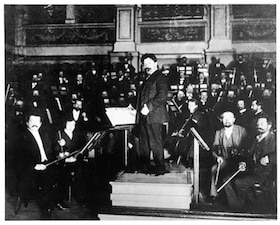
What can we learn from this intriguing and essential recording? Nikisch was quick in the outer movements, more relaxed in the middle. Although he pronounced the result ‘overpowering’, he had no control over the wretched sound differentiation and did the best he could in the circumstances. Seven years later Arturo Toscanini’s recording of the finale at La Scala is much clearer, though still far from a true picture of orchestral dynamics and intepretative tradition. Over time, Toscanini developed a crisp Beethoven style of his own, exemplified in his New York recordings, hard-driven and still in poor acoustics. Some, nonetheless, swear by Toscanini’s self-proclaimed authenticity.#
The most daring Beethoven conductor in his time was Gustav Mahler, changing the instrumentation in the ninth symphony and making an orchestral version of one of the string quartets. Mahler’s close disciples, Bruno Walter and Otto Klemperer, exemplify opposite aspects of his character – Walter conventional and emollient, Klemperer brusque and improvisatory. There’s a wild Klemperer performance at the Hollywood Bowl in January 1934, possibly taken during one the manic phases of his bipolar condition and in ropey conditions. You’d be better advised to listen to his glorious mono account of 1955 with the Philharmonia Orchestra in London. Justly considered one of the great recordings of the century, Klemperer makes individualistic changes to the score, getting the violins to play pizziccato at the end of the second movement and making an unscripted repeat of the exposition in the finale. The alterations bolster the work’s archtiecture, making it feel more secure and less revolutionary.
I expected Bruno Walter to take a safer course, and I was wrong. Conducting the New York Philharmonic (in excellent form) in the CBS 30th Street studio in 1950, he takes a fairly tepid approach to the asssertive opening, allowing the tension to accrue organically through the work to a nerve-tingling conclusion that will take your breath away. Never a knee-jerk admirer of Walter’s, I am utterly won over by this reading.
Also not to be missed is a performance conducted by Richard Strauss with the Staatskapelle Berlin in 1928. It’s super-fast and ultra-flexible, with nifty little composer touches as Strauss holds back the strings at times til their fingers ache. The oboe solos are almost operatic in their soft, singing style. Willem Mengelberg‘s 1940 recording in Amsterdam, on the other hand, is simply eccentric and in all the wrong ways, pulling the tempi around and flicking them back like elastic bands. It’s not without excitement.
Wilhelm Furtwängler, the most robbery of maestros, is best heard live in Beethoven’s Fifth, rather than in studio. I have narrowed down to choice to between June 1943 Berlin – a breezily triumphalist performance – and 1954 Vienna, more sedate, at times defeatist. Extraordinary that such contrast can be drawn from the same notes.
Which brings us to Furtwängler’s Berlin successor, the prolific Herbert von Karajan. There’s a 1948 recording with the Vienna Philharmonic but the full Karajan treatment is heard to best effect in his 1954 recording in London with the Philharmonia Orchestra, many of whose ex-army players regarded him (they told me) as an unregenerate Nazi and their natural enemy. The tension that is palpable throughout this performance owes much to that irreconcilable animosity but the music transcends human conflict and its momentum is irresistible.
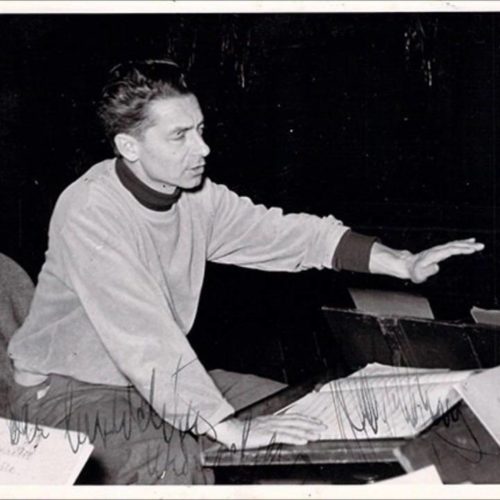
Karajan would record this symphony again and again in Berlin and Vienna, each time with refinements that ironed out its jagged edges, but never again did he obtain the near-perfect internal balance and natural propulsion of this Abbey Road session. Several members of my panel, led by the former EMI chief Peter Alward, regard it as paramount. Our American experts swear by the unflappable Georg Szell.
Tomorrow, we’ll take a look at more recent recordings, especially those on period instruments.

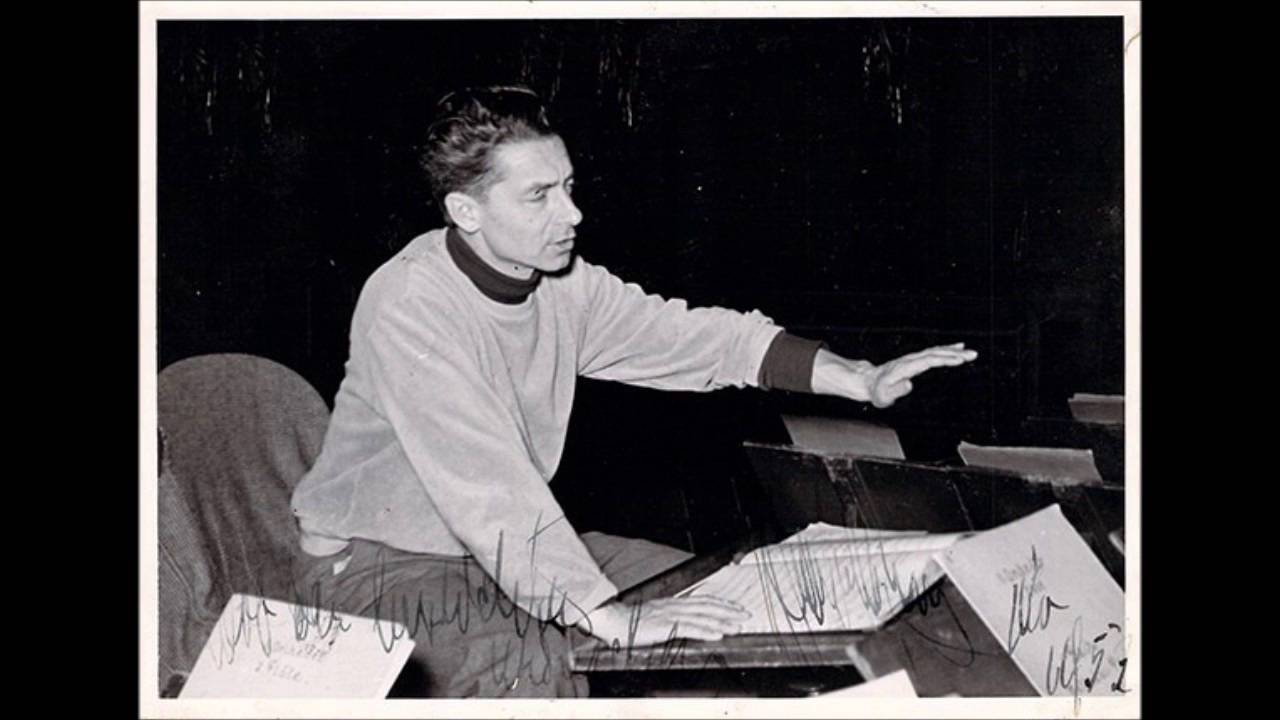
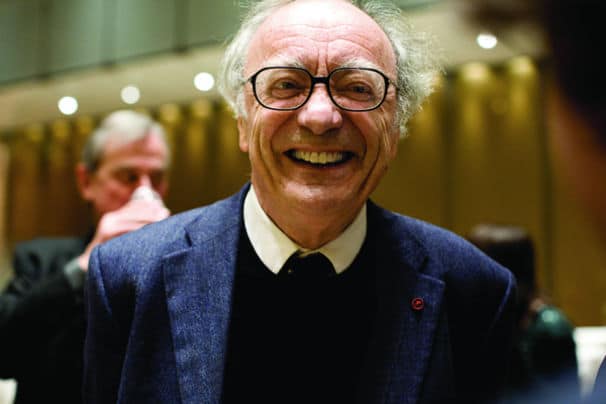

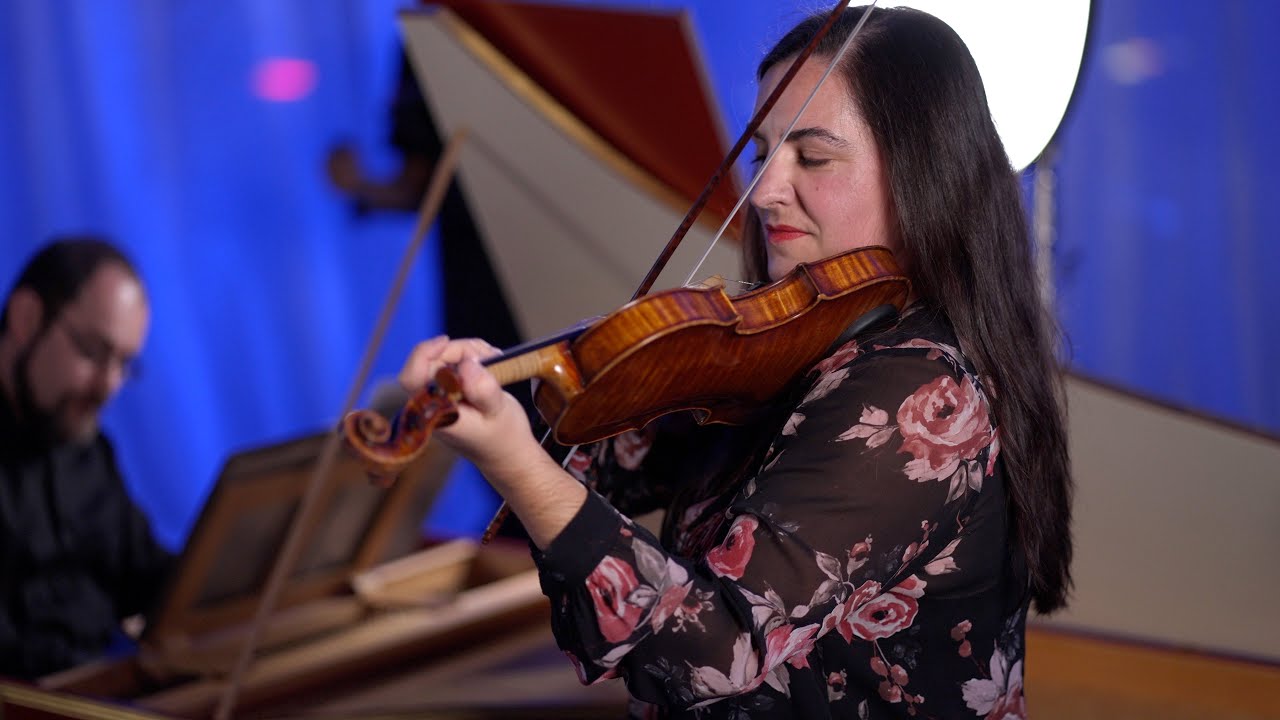
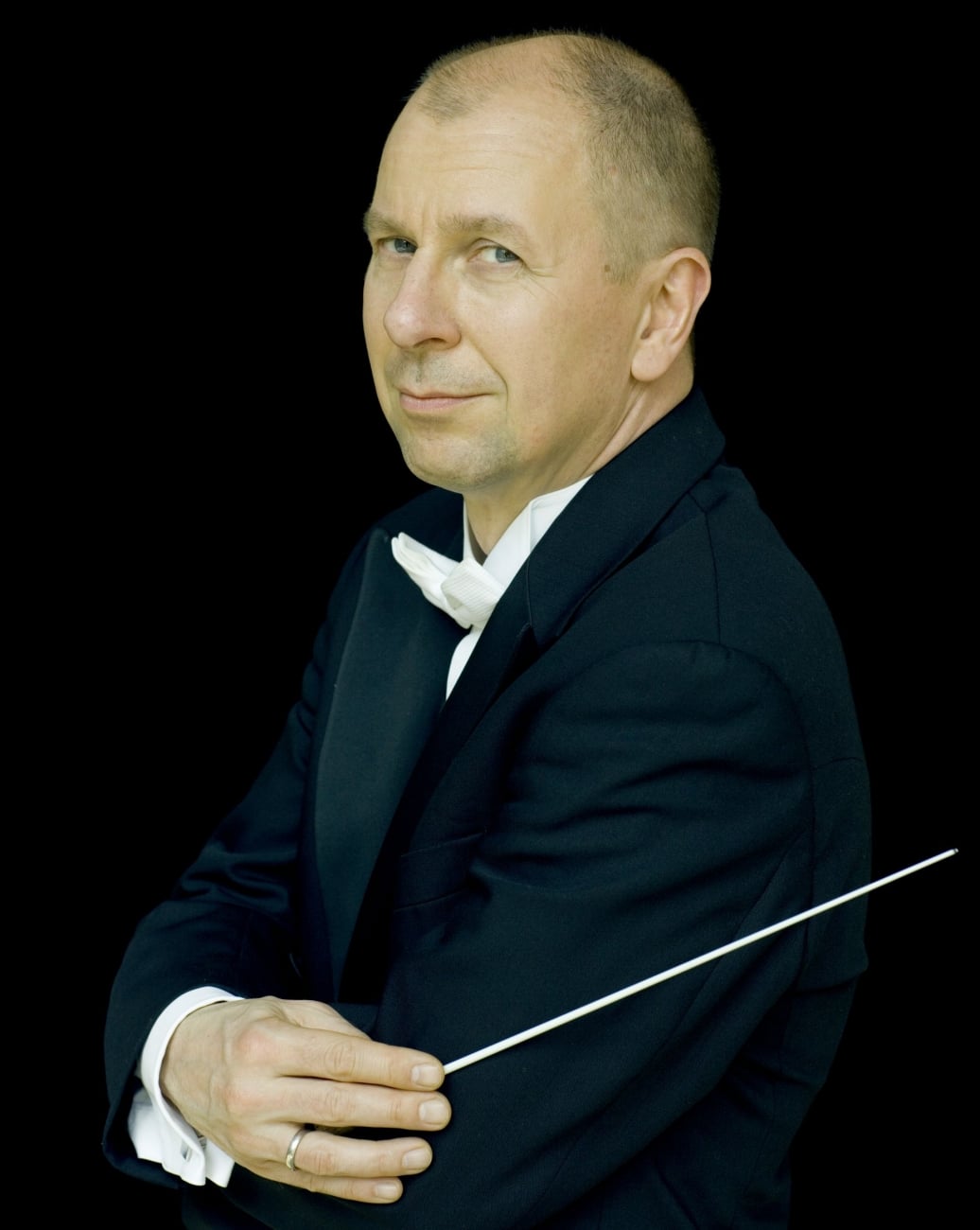
Right now, I’m listening to the Toscanini NBC SO concert performance from his 1939 Beethoven cycle that is referenced in the second link of this column. It sounds stunningly good : in terms of basic quality, not much inferior to the Klemperer 1955 Philharmonia recording, and around the same sound quality level as the Furtwängler 1954 concert BPO 5th that is available in the Audite RIAS box set. The CD which Mr Lebrecht references has the cover of the Toscanini CD series from around 1990, which really does sound mediocre for what was included of this 1939 concert cycle.
However, last year Andrew Rose from Pristine classical was given almost unplayed acetates that document this 1939 cycle, and restored them for CD and 24 bit download. Rose also used the new Capstan digital pitch stabilisation software that seems to make a meaningful difference to any sustained tones. [ A bit like playing a LP on a Linn Sondek LP 12 versus a cruddy record player from the 1970s.] Compared to the 1930-1933 Toscanini Fifths, the andante of the 1939 version is around 9’15; ie quicker by up to a minute to these earlier recordings — and swifter than Kleiber. [ This is not easy to achieve in any of the symphonies than CK recorded for DGG! ] Despite the unsentimentally swift tempo, Toscanini largely maintains the pulsatile inflections in the andante’s string lines that makes the cantabile delicacy of Beethoven’s inspiration so compelling.
“Klemperer makes individualistic changes to the score, getting the violins to play pizziccato at the end of the second movement and making an unscripted repeat of the exposition in the finale.”
It looks like whoever wrote this fell asleep and woke up at the end of the second movement of the Seventh Symphony, where the controversial pizzicati are to be found. As to the exposition repeat in the finale, it is very much scripted (in both symphonies). I am starting to see why people say that you are good at fiction!
This has nothing to do with Beethoven so forgive me. But it does have something to do with these kind of historical and comparative essays which I very much enjoy. So keep them coming.
I’ve been listening to many versions of Richard Strauss’s masterpiece, “Tod und Verklärung”,generally translated as “Death and Transfiguration”. A better translation might be “Death and Englightenment” because 1) the German verb “verklären” means “to shine light on”, hence “enlightenment”. 2) Strauss and his friends were big fans of the German philosopher, Arthur Schopenauer, who in turn was influenced by Eastern religions and the Buddhist notion of rebirth.
From all the versions I’ve heard on Youtube, the 3 best, for me, are 1) Otto Klemperer’s. (Who was also famous for his Beethoven interpretations). Note that he is generally seen to favor slow tempi but his recording with the Philharmonia Orchestra is 6 minutes faster than my 2nd choice. That is by Serge Celibidache and the SWGerman Radio Orchestra. It is a magesterial and commanding performance. It builds tension and draws it out. In third place: George Szell and the Cleveland Orchestra (also on the fast side). A superb reading with a famous orchestra.
I find Zinman is also good (but on the predictable, fast side) and Karijan is not so good, in my opinion. The idea of listening and comparing, for individual tastes, is a good one. Keep it up.
NOTE to Moderator: incorrectly filed under another story earlier.
You have mistaken the verb “Verklären” for “Erklären”. “Sich verklären” means to transfigure in a religious sense.
As a flutist, I rather like the Galway recording (i.e., Karajan/Berlin, early 70s).
On another aside, if you get a chance to listen to Bruno Walter speak in English, he was amazing. There’s a New York Philharmonic historic recording (of what I’ve forgotten) with him speaking to the crowd: impeccable English. Remember, it was at most his 2nd language.
The ‘content’ of nr 5 is not so difficult to grasp. The language of the classical style offers the possibility to create emotional experiences which closely resemble real emotional states, but ordered as they are never ordered in the average individual. In this way, music is an expressive ‘language’, not with a grammar but with a structure, and the thing expressed is not the ‘what’ but the ‘how’. So, nr 5 takes the listener through a trajectory from how it feels when something appears as an existential threat, through struggle to victory over adversity, through an emotional landscape with mountain tops and deep valleys. In the same time, the trajectory is ordered in a logical way, and this combination of emotional experience and logic explains why musical people feel uplifted by the listening experience: you can recognize life experience in an ordered context. This is not something particularly ‘romantic’, but in the 19th century the mental climate was perceptive to such explanations.
Really enjoy your daily Beethoven analyses, adds really to the Beethoven year, thanks!
Norman, Surely you’ve got it wrong about Klemperer’s Fifth! The pizzicato ending to the second movement is in the Seventh (something the Kleibers did too), not the Fifth, and the exposition repeat IS marked in the finale of the Fifth, though ignored by most in Klemperer’s time.
“many who regarded him with animosity”
I wonder how widely felt that was?
The BBC documentary interviewed a clutch of players from the philharmonia (inc. Neville Marriner) and I didn’t detect fierce hostility.
What an opening! Almost universally known, but never cliche. Even the openings of Mahler 5 and 6, wonderful as they are, can’t compare!
My mother, deep in the depths of dementia, doesn’t always recognize me; but when I arrived for a visit several months ago, looked at me with an expression of trying to remember something, then her face brightened and she said: “Pa-pa-pa-PAAAAAAH!”
I can’t remember exactly when Rafael Frühbeck de Burgos conducted the 5th Symphony with the Pittsburgh Symphony Orchestra but it was around 2009 or 2010. I have in my long life heard the 5th dozens if not hundred of times both live and recorded but never with such force and conviction.
That day, a Sunday in the afternoon, the performance was electrifying and in my humble opinion the greatest interpretation I’ve had ever heard, ever.
The PSO and our conductor had added, and I remember this clearly, two more bassoons and increase as a whole the wood winds beyond the standard formation. That was remarkable. Those two extra bassoons added a cataclysmic sense of urgency I had never heard before anywhere.
Frühbeck de Burgos conducted the first and second movements right through with an extremely brief pause to go through the third and fourth also with the impetus of a cavalry charge. At the end it felt like even that minimal pause did not even occur.
It seemed to be extremely fast but it was not. The PSO sound engineer (a good friend of mine) always had to make a recording of each performance of the orchestra as per the musicians rule and contract and I remember him later timing the performance slower than Karajan 1963. Much slower as in the order of a few minutes longer. How? I don’t know really.
The tempo was indescribable and the marked stops believably observed as per the original score. You knew there was something magical in that performance. The rousing ovation at the end attested for that.
That afternoon was one I will never forget and went from the common to the unique and I like to think that was what Beethoven wanted. It was great to be alive to hear that music as it was played. I still hear it in my heart like an ominous call of attention to something…though what that something was I have no idea.
In the best sense it was like a Hitchcock movie, the end of the (musical) story was the end of all things – all things in this world.
“There’s a wild Klemperer performance at the Hollywood Bowl in January 1934, possibly taken during one the manic phases of his bipolar condition and in ropey conditions.”
It’s true that Otto Klemperer had some mental problems but let’s face it: most great musicians and conductors are and were not 9 to 5 people. They were not average people in any respect and perhaps that made them more sensitive to their craft.
The term “Wunderkind” was made for Mozart but applied to many others too. Richard Strauss began musical studies at age 4 and composed at age 6; Mendelssohn was called by no less an authority as Goethe to have more talent at the same age as Mozart. Charles-Camille Saint-Saëns displayed perfect pitch at the age of 3 and gave public concerts at the age of 5. Claudio Arrau could read music before he could read words; he gave a piano concert at the age of 5. As a young child, Leonard Bernstein could play Beethoven programs on the piano. None of these people were “average Joes.”
Let’ not also forget that Mozart himself (brilliant played in Amadeus with all sorts of disorders) has been “diagnosed” by contemporary mental health people to being a manic depressive and a pathological gambler, as well as having a host of psychiatric conditions, including attention deficit/hyperactive disorder, paranoid disorder, obsessional disorder, dependent personality disorder and passive-aggressive disorder. Handel was likely gay and as an unmarried man left almost all of his possessions to his “butler” “man servant”. Beethoven probably would have been arrested today for his feelings and attitudes towards his nephew. The great Tchaikovsky commited suicide over his homosexual yearnings. Erik Satie? Probably the most eccentric man who ever lived.
My point is that many of the greatest heroes of classical music as composers and conductors were not 9 to 5 types: they were oddities of nature in a sense. They often made niches outside the “normal life.” Their talent and abilities (often seen as failings by others) made them better artists.
True.
But not always and not entirely.
For instance, Eric Satie was perfectly normal and average, wearing notary suits and bowler hats, brandishing a perfect bourgeois umbrella also when it was not raining at all, and watching the world go round through a very satisfying pince-nez. He lived in one single unheated room without a water tap, and rubbed himself clean with a pumice stone instead of taking a bath. He wrote perfectly average miniatures of grace and some of them were even beautiful. So, he lived more or less like any venagist of today. Only, the world around him was very peculiar.
Sorry, I don’t understand. How is Klemperer’s finale exposition repeat “unscripted”?
Let me be the first to comment that I agree with you about the HvK Philharmonia record, though it was news to me that there was the dynamic of tension — but it makes perfect sense of course. I’m sure I’m not alone, though in considering his 1963 Berlin version the sine qua non.
I wonder how many of our preferences in this work are a function of how we first got to know it?
Because my father for many years regarded long playing records as a passing fad we stuck with 78s into the 1960s (which also meant we weren’t buying new records!). Thus the version I grew up with is one which, I assume, few would list as a great one: Sir Landon Ronald and Royal Albert Hall Orchestra on Victrola shellacs. The electrical version, not their earlier acoustic recording. The horn playing was surprisingly assured by the way.
Ronald takes the opening motto more deliberately than most; it does not slash, it bellows at the door rather than knocks at it, but it is totally together which is more than you can say for many concert accounts, including a memorable disaster by an orchestra that my wife played in at the time. It was the conductor’s fault, as usual. As the old joke goes, the difference between an orchestra and a bull is that with the bull, the horns are in front and the asshole is in the rear.
Anyway that meant first hearing Toscanini’s account came as a revelation to me.
Our family finally joined the 33 1/3 rpm world one Christmas after my sister said she would die – DIE I tell you, die! — if she did not get a certain Gene Pitney album for Christmas. That meant not only buying the Pitney album but a stereo to play it on. We were instant converts to stereo LPs (since the world does not live by Pitney alone) although we’d still play favorite 78s now and then. But old habits died hard: when we’d play an LP of a piece we had on 78s such as the Brahms Violin Concerto my father would instinctively stand up when he knew the 78 rpm side was about to come to an end and the record needed to be flipped over. But these were LPs and the music continued uninterrupted. Sheepishly he would sit down again.
Although too brief and likely known to those who admire George Szell the video of him rehearsing the 5th is still interesting https://www.youtube.com/watch?v=YlyUti7BbCY. One other point in discussing performances that is probably obvious but worth keeping in mind is that of live vs. studio recordings. As much as I admire most Szell/CO studio recordings the opportunity recently to listen to tapes of live broadcasts, hosted by Robert Conrad, has only enhanced my appreciation for the Szell-era. The performances have flexibility and virtuosity which exceeds what was accomplished in the “studio”. If accurate perhaps it stems from the fact that conductors of old trained in front of audiences and before adequate recording technology was available.
Jonathan Del Mar’s edition for Bärenreiter has that “unscripted” repeat of the first 80 or so bars of the final movement, as does the Eulenburg reprinted by Dover. Breitkopf 1st part from Bernstein’s part library has it, along with indication that the repeat is to be taken. Perhaps you’ve just listened to too many recordings that omit it.
https://youtu.be/bSvSOV6xi7s at 23:59 clearly shows the repeat in the autograph.
Erich Kleiber
“There’s a wild Klemperer performance at the Hollywood Bowl in January 1934” listed on the linked website. How says it was at the Pasadena Playhouse. Is there another recording at the Bowl? Thank you.
For me, nothing is as peremptory as the opening of the Eroica. Those opening two chords grab you and throw you into the Romantic era.
Beethoven’s Fifth Symphony was premiered on December 22, 1808. It began the second half of a four-hour concert that started with Beethoven’s Sixth Symphony and included Piano Concerto No. 4 and the Choral Fantasy. Beethoven conducted and played piano. The concert was nearly a disaster.
While we all know the story about Eroica and the “program” for the Pastoral Symphony, it is widely assumed that the Fifth has none. I believe this is a mistake. It is very much a product of the time, with revolution and the Napoleonic Wars. War was declared against France three months later, and Vienna was surrounded four months later. Added to that was Beethoven’s increasing deafness that led to thoughts of suicide.
I find expressed in the Fifth Symphony struggles on a personal, national, and Europolitical level. The first movement has conflicts of themes, harmonies, and sections of the orchestra. Consensus is finally achieved, with the decision to go to war to fight tyranny, despite a call for peace from the oboe. The second movement, in A-flat major (a key far removed from C minor), has two themes. The first is a recurring love theme, the second has a military orchestration and feel. This could be a soldier saying goodbye to his beloved, and is one of Beethoven’s most touching expressions.
The third movement is the fearful time preceding battle, complete with a nervous shiver. Marching to the battlefield with heavy steps, at the trio soldiers charge in waves of musket-bearing groups, cheering as they go. The fog of war has them in doubt as to the victor. Tiptoeing as they signal each other, distant drums have no identifiable flag. As the smoke clears, Victory is assured. Here is orchestrated joy, with hymns of praise and dancing in the streets. (The exposition repeat, part of sonata form, interrupts the flow and is best omitted.) The return of the third movement theme allows a moment of remembrance for those who had died in battle. The oboe reminds us that he told us so. The celebration resumes.
For me, the clearest representation of the above is the 1971 recording of the Cleveland Orchestra conducted by George Szell. The combination of fire and ice is stunning.
With such descriptions, we no longer need the music.
It seems to me that music filters-out, from real life experiences or real life emotions, the element which is non-conceptual, the ‘how’ and not the ‘what’, so that the music becomes universal and can relate to people from different places and different times. That is why philosophers from the early 19th century onwards ascribed to ‘absolute music’ the highest standard.
Even Wagner, the romantic composer par excellence who insisted that music without the ‘what’ had no meaning, or not enough meaning, turned to the idea of absolute music at the end of his life after his disappointments with the stagings of his operas.
I’ve often felt that about your writings here, John.
Interesting and personal viewpoint and description, but Aflat major “far removed” from c-minor?? Hardly. It’s a very common shift in Beethoven (“Pathetique” for example), and later Romantics, very easy; just add a flat!
Yes, of course. The main point is the contrast of going from the final notes of the first movement (loud, staccato, C-minor) to the second (A-flat major, piano, legato, unison violas and cellos). Nothing could be more different. The above description was shortened considerably.
Absolutely! Thank you for pointing this out!
Good on you for including Walter’s NYPhil 1950 performance, but any discussion of classic Beethoven 5 recordings has to include:
Szell/Dresden:
https://www.youtube.com/watch?v=1HQa5fto1oA
Mengelberg ’37:
https://www.youtube.com/watch?v=ol5aGqS6E98
Schuricht at the Paris Conservatoire (first recording in ’49):
https://www.youtube.com/watch?v=tDUXhqoJdvs
and Munch/Boston live:
https://www.youtube.com/watch?v=U1mw5_4kmh4
Funny Alward is former EMI chief. Wonder why he chose Karajan’s EMI recording? Most people including me would go for the 1963 or 1977 Berlin recordings.
does no one recall the weingartner cycle by which as a youth i was very impressed?
Strangely, the remarks about the repeat in the last movement, (observed by Carlos Kleiber and Solti as well as Klemperer) would be accurate if discussing the recording of the scherzo under Boulez. He repeats the first scherzo section (as in the 7th and 9th).
At the stage door after his RFH performance, I asked him why he did this. Ever the polite communicator, he nodded to the man on his left and explained that they’d found evidence of a repeat in an early manuscript. It certainly evens out the length of the movements, but I don’t think any other conductor has taken up the idea!
When listening to the last movement of the 5th, I am always looking out for how the horns will be handled at letter A. Will they blaze out romantically as if in a Mahler Symphony or blend modestly with the woodwind section who have the same theme? Mengelberg and Strauss slow down as expected, as does Abbado in his early recording, making the most of the VPO horn section.
Szell dooes the same even more fiercely in Dresden (surely more than two horns at work). Klemperer and Solti hold them back in their more classical, apollonian view. As does Abbado in his second thoughts.
Concerning Klemperer (whose career straddles the dionysiac and the apollonian) my favourite performance of his is with the VPO in 1968. It was one of those nights. The pace is steady, but the focus fierce and commanding. The players play as if possessed.